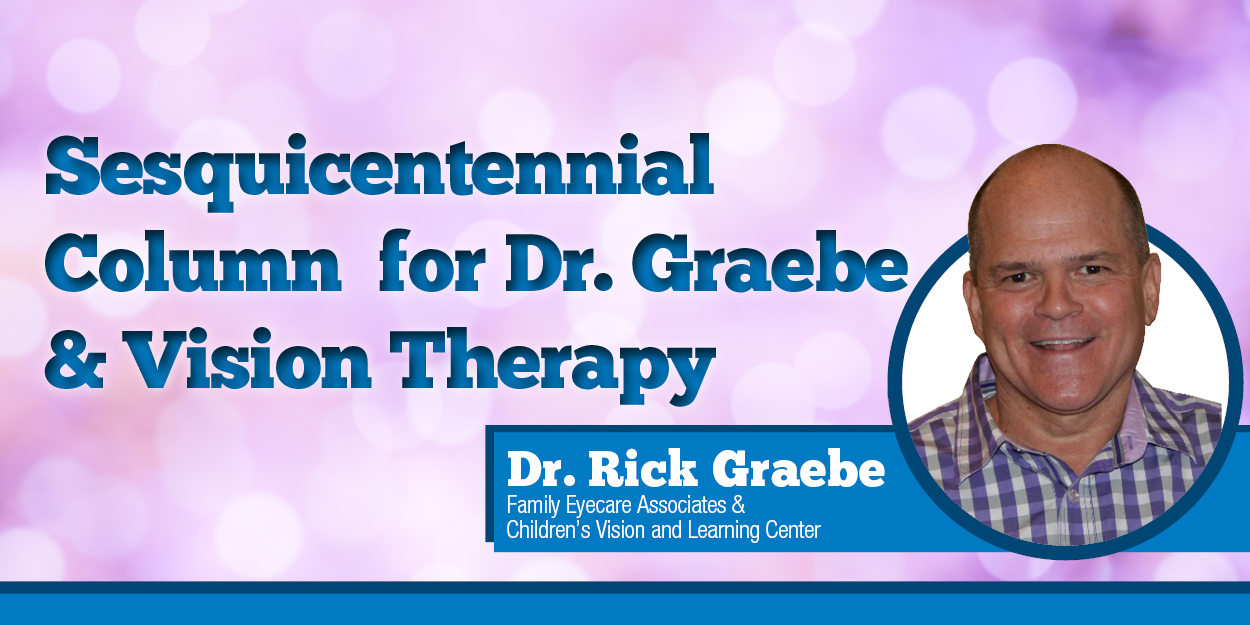What I Have Learned From Dr. Graebe
By John Lynch
Every month since January 2008, Dr. Rick Graebe and I have met by phone for our regular interview session to discuss the latest article for Lexington Family Magazine on Vision Therapy and other eye- and learning-related issues.
Rick brings nearly 40 years of experience in optometry to the partnership. I bring a similar amount of experience as a journalist.
This month marks our 150th collaboration, and the conversation, like all the others, was freewheeling, wide-ranging and particularly edifying for me.
Rick has been a behavioral optometrist in Versailles since 1984, has practiced Vision Therapy since 1990 and heads Family Eyecare Associates and Children’s Vision and Learning Center.
That description, while accurate, doesn’t do justice to Rick’s restless intellect and his curiosity about improving human performance so that his clients reach their potential.
Typically, our conversation starts with friendly chit chat, often about golf, a shared hobby, before Rick’s mind kicks into gear and he starts pinballing from one topic to another.
Wherever our conversation begins, it invariably veers – radically, suddenly – in any and all directions as Rick pivots from one area of interest to another.
One minute, he’ll be discussing academic performance in the classroom and the difference between learning to read and reading to learn, and the next he’s expounding on the function of various brain waves – Gamma (concentration), Beta (active), Alpha (relaxation), Theta (deep relaxation) and Delta (sleep). All off the top of his head.
He then might discuss the value of the brain’s neuroplasticity or how to use Vision Therapy to improve sports performance. (Rick’s understanding of this issue caught the attention of Major League Baseball and he was invited to spring training for the Oakland A’s where he helped supervise tests to improve players’ eye-hand coordination.)
His other topics of interest include brain injury recovery, lazy eye treatments, the rise in childhood myopia, corneal molding, the dangers of screen time, the visual system vs. mere eyesight, the shortcomings of the traditional eye chart as a diagnostic tool, the importance of outdoor play for children, how proper posture is integral to good reading habits, why some children are clumsy and can’t ride a bike, or why older people have trouble driving at night.
Believe me, that is only a tiny sampling of Rick’s interests and areas of expertise. And I haven’t even mentioned his passion for the latest technology that can help his patients.
Meanwhile, I’m scurrying to keep up but learning all kinds of things in the process.
What I learned most from Rick was the intricacies of Vision Therapy, which is a non-invasive treatment for such common issues as lazy eye, crossed eyes, double vision, convergence insufficiency and some reading and learning disabilities.
VT is a kind of physical therapy for the brain, eyes and body. Treatment is non-academic and includes games, puzzles and balance exercises that patients actually consider fun.
Typically, visual system problems are diagnosed once a child attends school where up to 80% of learning involves close-up work like reading. The most common roadblock to academic success involves convergence insufficiency, which is the inability of the eyes to work together when looking at close-up objects.
This problem can exist even in people with 20-20 eyesight and can’t be detected by the eye chart exam.
But through his understanding of Vision Therapy, Rick has devised an exam that diagnoses the problem and then fixes it with VT.
Routinely, after 30 weeks of Vision Therapy, students see improvements of up to three years on standardized visual skills testing.
In addition, Vision Therapy, like other therapies, creates pathways in the brain that last a lifetime.
Many times I heard Rick say how thrilling it is to help people improve performance and reach their potential. One wall at his Versailles office includes testimonials from satisfied families, and I have written dozens of testimonial stories about children who turned their academic careers around with Vision Therapy.
After 150 conversations with Rick and writing the accompanying articles, I’ve learned much about how people learn, and how the brain and visual system work.
Exposure to new ideas is one of the fundamental joys of journalism. I’ve got Rick to thank – 150 times over – for taking me on that journey.
To view past Vision Therapy columns, visit the Archives section here.
To read editor John Lynch’s farewell column, click here.

